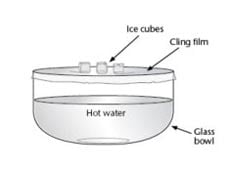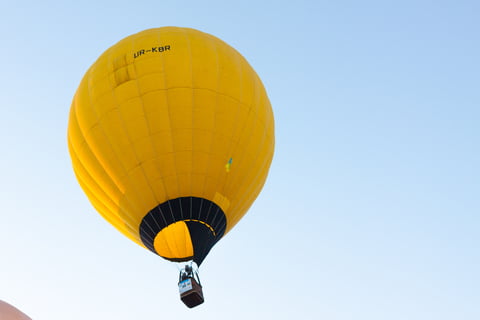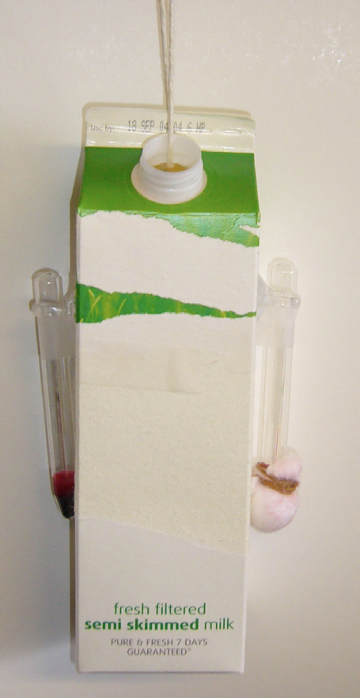Make a Barometer
Measure air pressure
Equipment
◊ An empty 2 litre plastic water bottle.
◊ A ruler (30cm)
◊ Sellotape
◊ 40cm of clear plastic tubing
◊ Bluetack
◊ Water (with optional food colouring)
◊ A pen that will draw on plastic

Method
1. Cut off the top of the bottle. Begin by standing the ruler in the bottle. Tape the ruler to the outside of the bottle. Make sure that the numbers on the ruler are visible through the bottle.
2. Stand the plastic tube inside the bottle. Tape the tube to the bottle, but make sure that the tube is not touching the bottom of the bottle – raise it by a couple of cm. As tape will not stick well under water, make sure that the tube is mainly secured higher up. It doesn’t matter if the tube is not very straight.
3. Fill the bottle about half way with water. Use the plastic tube like a straw and draw some water half way up the tube. Use your tongue to trap the water in the tube. Quickly move the bluetack onto the top of the tube to seal it. This is the tricky part!
4. Make a mark on the outside of the bottle to record where the water level is in the tube. Each time you notice a change in the water level, make another mark.
How can I use this to measure pressure?
You’ll notice, over time, that the water level rises and falls. Pay attention to the change in weather as the water level changes and, if possible have a look at BBC Weather to find out what the actual pressure is where you are.
The water in the tube rises and falls because of air pressure exerted on the water in the bottle. As the air presses down (increased atmospheric pressure) on the water in the bottle, more water is pushed into the tube, causing the water level in the tube to rise. When the air pressure decreases on the water in the bottle, some of the water will move down out of the tube, causing the water level in the tube to fall. The change in barometric pressure will help you to forecast the weather. Decreasing air pressure often indicates the approach of a low pressure area, which often brings clouds and precipitation. Increasing air pressure often means that a high pressure area is approaching, bringing with it clearing or fair weather. The air pressure varies between about 970-1040mb as weather systems pass over. Pressure also falls with height. At the top of Mount Everest the pressure is only 330mb.




